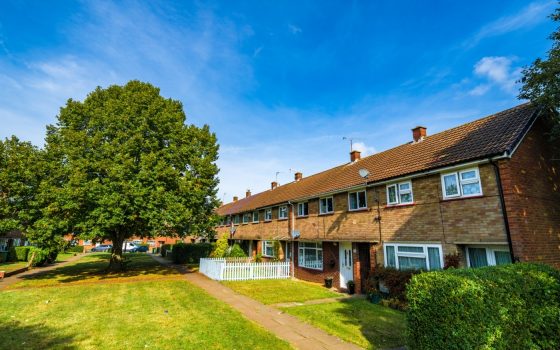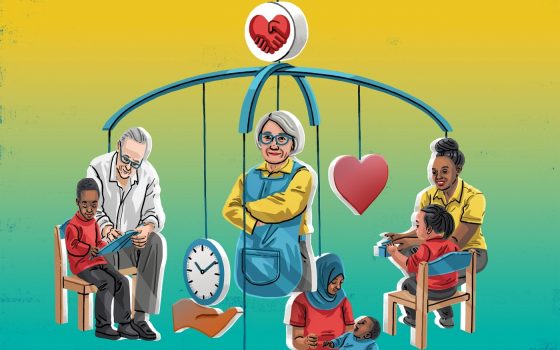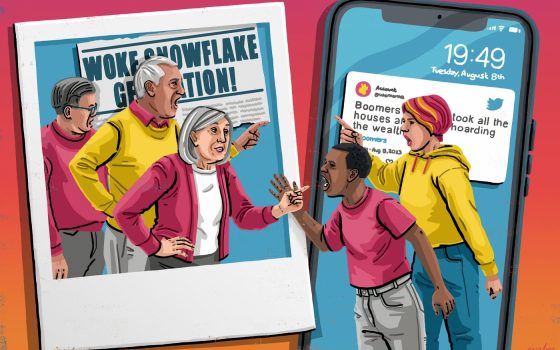Racism is driving us mad
BAME people can't access mental health services as easily as their white counterparts – and why, when they do get support, they have lower recovery rates
14 December 2020
This is an article from the second issue of the New Economics Zine. You can read the full issue here
Newham has one of the most ethnically diverse boroughs in the country. It also has some of the highest rates of poverty and homelessness. And it was there I used to work on a mental health ward. In the course of my job I wrote countless letters to housing support services, worried about the impact of continued homelessness on my patients’ wellbeing. I watched as welfare officers tried to guide patients through the twists and turns of the benefits system, and I pleaded with unwell patients who wanted to self-discharge because their zero-hour contracts meant that while they were on the ward and unable to work, they could not receive any pay. And, as the days went by, I noticed that these people often looked more like my grandparents, my aunts, and my uncles than they did my medical peers.
People from Black, Asian, and Minority Ethnic (BAME) backgrounds are more likely to experience poverty, low income, unemployment, poor housing, and homelessness than their white counterparts. This socio-economic disadvantage increases the likelihood of developing mental health problems, which, in turn, increases the likelihood of further socio-economic disadvantage.
The link between socio-economic disadvantage and mental health problems is well-established. In the UK, the poorest fifth of the population is twice as likely to develop mental health problems than their wealthier counterparts. People who are unemployed are two to three times more likely to die by suicide than those in employment. One US study found that the risk of chronic mental health problems increased as unemployment rose, but noted that this was especially true for Black people in 2007 to 2011, during the heart of the economic recession.
“… as the days went by, I noticed that these people often looked more like my grandparents, my aunts, and my uncles than they did my medical peers.”
In the UK, low-income Black and Asian families were disproportionately affected by austerity measures, losing an average of £8,407 and £11,678 respectively, each year. Tax policy, welfare and wage reforms impact BAME women in particular, who are more likely to be caring for children and older family members.
In addition to material deprivation, income inequality has negative impacts on mental health. Countries with higher levels of income inequality see a higher prevalence of mental health problems; unlike physical health, as countries get wealthier, rates of mental health problems increase.
In Kensington and Chelsea for example, average income ranges from £15,000-a-year for residents of World’s End Estate to £100,000-a-year for residents living on the other side of the King’s Road. A man living in Golborne ward can expect to live for 72 years versus 94 for a man living in Hans Town, near Harrods. As is the case across the UK, Kensington and Chelsea’s BAME residents are more likely to live in the more deprived parts of the borough, such as the northern region, where the Grenfell fire broke out. For many, this tragedy was the result of structural racism and classism, evoking anger as well as grief.
BAME people have poorer access to mental health services than their white counterparts, and even when they do gain access, they have poorer outcomes. BAME groups have higher rates of inpatient admissions, involuntary admissions, restraint, being placed in seclusion, and community treatment orders, and they have lower recovery rates than white people.
Still, the term BAME often masks the social structures, hierarchies, and intersections within its umbrella. For example, Bangladeshi and Pakistani groups have the highest levels of poverty in the UK, but Black groups are the most affected by mental health problems. Black women are more likely to be diagnosed with a common mental disorder such as anxiety or depression, but suicide rates are highest among young South Asian women. Black men are the group most likely to be diagnosed with psychotic disorder and detained under the Mental Health Act.
“BAME people have poorer access to mental health services than their white counterparts, and even when they do gain access, they have poorer outcomes.”
Eche Egbuonu, the organiser of Prison By Another Name, has bipolar disorder and frequently shares his experience of being taken to a police cell when he became unwell instead of to a safe environment for medical assessment. Shortly after being released, an altercation at his home led to the police being called. This time, he was tasered, handcuffed, and detained under Section 2 of the Mental Health Act. Like many Black men across the UK, Egbuono is distrustful of the mental health system.
Despite national initiatives to address racial disparities in mental health, these inequalities persist, and BAME people have to rely on grassroots organisations to provide the support they need. One example is Black Thrive, a Lambeth-based partnership for Black mental health and wellbeing, which aims to reduce mental health inequalities by addressing inequalities in areas such as housing, education, and employment. Another example is the Chinese Mental Health Association which runs housing and employment support projects. However, many grassroots organisations have suffered funding cuts, undermining their capacity to promote wellbeing and racial equality
Tackling racial inequalities in mental health requires tackling the interlinked racial and socio-economic inequalities that exist in wider society. The Human Rights and Equality Commission has called for a comprehensive race strategy that includes education, employment, housing, pay and living standards, health, and criminal justice in Great Britain. A UN Special Rapporteur remarked that “the structural socioeconomic exclusion of racial and ethnic communities in the UK is striking.” The government thanked the Special Rapporteur for her report but rejected her suggestion that its policies, regarding austerity, immigration and criminal justice, further entrench racial inequality, stating simply that they are committed to the total elimination of all forms of racism.
When we refuse to see racism within its wider socio-economic and structural context, limiting its definition to explicit displays of prejudice, people suffer. When we refuse to see mental health within its wider socioeconomic and structural context, increasing funding for crisis support but defunding women’s refuges, people suffer. The UK may not be 100% racist, but racism permeates through all levels of society, and, 100%, it’s driving us mad.
Samara Linton is a junior doctor, writer and coeditor of The Colour of Madness: Exploring BAME mental health in the UK. She is currently working at BBC Three as a production trainee.
Image: Eva Bee
Topics Wellbeing Health & social care Zine






